Best Winter Coats for Extreme Cold
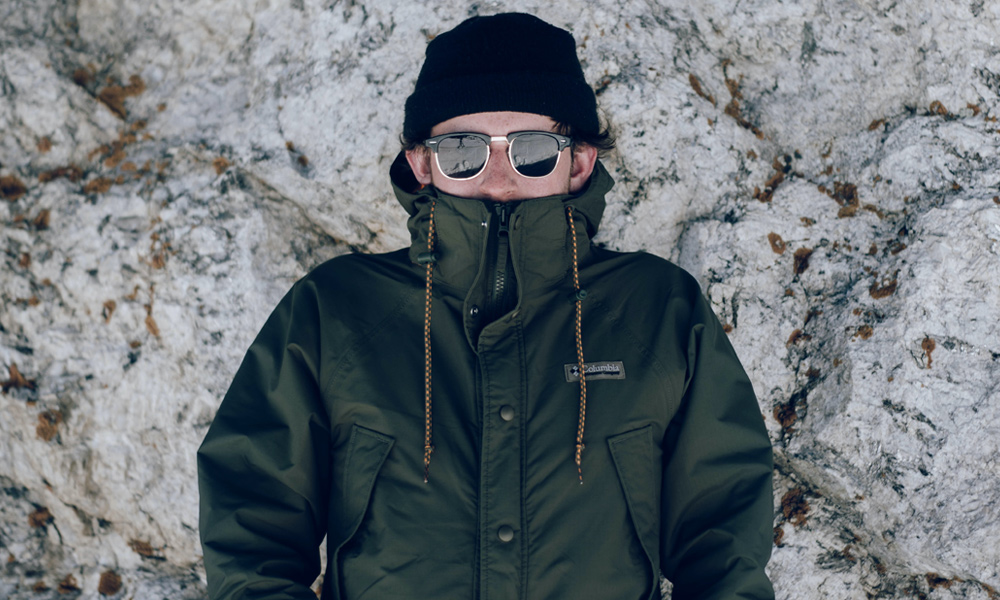
It’s finally time! A new expedition awaits. You’ve done your research and trained hard and now, it’s time to go brave the extreme winters of Siberia, Everest, Canada, Alaska, or wherever your heart and wanderlust take you next! You’ve gathered your supplies and made a gear list but there’s one thing missing, and it’s the most vital item of all. You need a coat. Not just any coat… you need a coat to end all coats one that’ll give you the warmest hug of your life.
There’s just one problem: You don’t know which coat to grab! How do you know what you’re looking for and where to find it? Which features matter the most? How do you know the coat will offer you warmth without restricting your movements or making you feel suffocated?
Don’t worry, this article will help you choose the right coat whether you’re off on an expedition or just want to get through another Alaskan winter with the warmest coat possible. We’ll point out the important features and help you compare coats to find the best and you’ll be ready to go.
View the Best Four Winter Coats for Extreme Cold, Below.
1. Canada Goose Expedition Parka
Best Men's Winter Coat for Extreme Cold

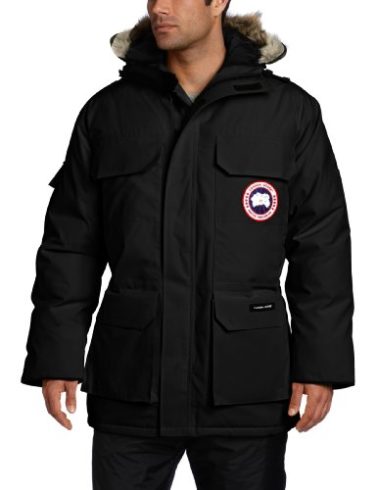
Canada Goose knows cold weather. Based in Toronto, Canada they’ve been in the business since the 1950s but it really took off from the 1970s. They invented the volume based down filling machine that now drives the industry standard for down fillings.
They developed the Expedition Parka in the 80s especially for the scientists working on the McMurdo Station in Antarctica. It became standard issue gear for those at base camp and earned the nickname Big Red because of its bright red color.
Canada Goose has since made lots of more innovative partnerships. They designed the parka for the first Canadian to summit Mount Everest and sponsored Lance Mackey, a world record holder and 4-time winner of the Iditarod and Yukon Quest dog races.
It also has a rich history in film, appearing in The Day After Tomorrow and National Treasure and more frequently behind the scenes as the official cold weather gear for film crews.
They stay true to their origins, making everything in their expanded base of operations in Winnipeg, Canada. They even have a line of jackets that shares proceeds with the Canadian polar bears, contributing over $3 billion so far to conserve their natural habitat. And have established free resource centers in the Canadian Arctic, providing free fabrics, buttons, and zippers for Inuit sewers who make jackets for their families.
This Expedition Parka is one of their most popular products. It continues to be standard gear for South Pole scientists to this day.
They have developed a Thermal Experience Index (TEI) to rate their jackets for conditions. This jacket is their warmest, rating a 5 (Extreme) on their scale for temperatures below -22F and -30C. This rating means it has been field tested for the coldest places on earth. The lowest recorded temperature in the McMurdo Station showed that these endured at -49C.
This jacket features an adjustable, coyote fur-lined hood to add warmth and protection against the elements. It comes with a removable fur riff and wire shaping to withstand extreme winds. A fleece lined chin guard offers additional protection and comfort. A webbing grab strap on the upper back makes rescues easier.
It includes a hidden snow skirt for additional protection against snowy expeditions. A 2-way zipper allows for access through the top or bottom of the jacket to reduce the need to expose more of your torso to the elements than necessary. A storm flap under the zipper also keeps you dry.
The jacket features 6 exterior pockets, 4 double entry Velcro secured pockets are on the front and 2 side entry pockets have a zipper closure. Each sleeve also has a Velcro sealed utility pocket. Two interior pockets are also zipper sealed.
Filled with 625 fill power North American white duck down for comfort and insulation. It uses Arctic-Tech for extreme conditions, with durable fabric that is water and wind resistant and keeps you warm. It is much lighter than comparable jackets.
The manufacturer provides a lifetime warranty for these products.
This jacket is dry clean only and therefore not suitable for the washing machine.
Check Price on Amazon ➞2. Men’s McMurdo Parka III
Best Budget Men's Winter Coat for Extreme Cold
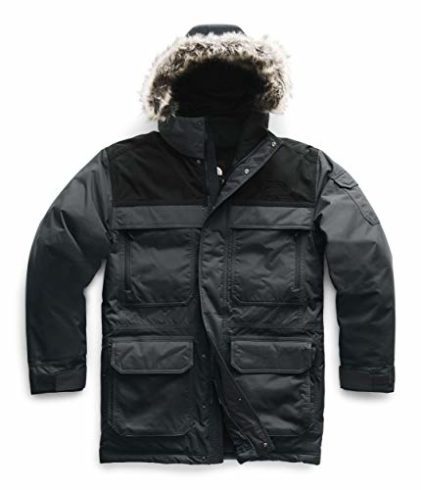
The North Face was founded over 50 years ago by a couple of friends. They were enthusiastic outdoorsmen who formed a company to reliably serve explorers. Their philosophy is that exploration creates a bond with nature that inspires people to protect the environment. This philosophy led to the creation of a company that backs all of its outdoor products with a lifetime guarantee on their workmanship. They are pushing for innovative techniques so you can travel wherever your desires take you with the reassurance that your gear will withstand the trek.
They designed this parka for city use; it is not temperature rated but does well in situations where you need a waterproof and windproof heavy coat. It is a down parka with responsibly sourced 550 fill goose down insulation, so it will keep you very warm but, if you have allergies to waterfowl discuss this with your healthcare professional first.
There is a wide range of sizes from small to 4 XL to accommodate every body type. It also comes in 7 different colors for any stylish fashionista. When you buy it from North Face directly, you also get a lifetime guarantee with free returns so if the fit is wrong, you can easily exchange it for the right one.
This is a waterproof, windproof, breathable fabric with a DryVent 2L shell. It has a removable faux fur cuff and adjustable cuffs so you can seal out winds from reaching through your sleeves. It includes a zip-off hood with a mask to protect against the wind chill and prevent your face from being exposed to the elements. It also has an internal, secure zip pocket compatible with most media devices and 4 external pockets.
Their Dry Vent fabric uses Polyurethane (PU) coating with a tri-component, multi-layer formula. It has a waterproof rating of 25 PSI and a breathability factor of 750 to 800 g/m2/24 hours on average. It is machine washable.
Check Price on Amazon ➞3. Canada Goose Kensington Parka
Best Women's Winter Coat for Extreme Cold
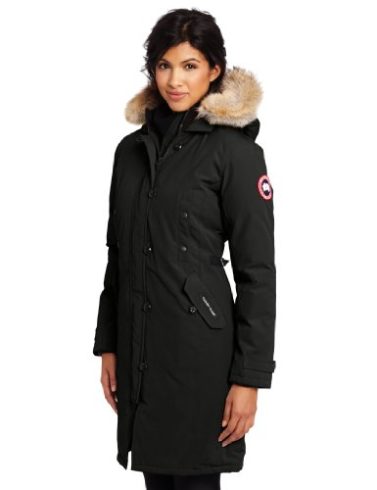
Canada Goose make exceptional jackets which is why another one of its quality coats made it on to the shortlist for this category.
Ladies, if you are looking at a lot of these jackets and wondering whether you must compromise style and fashion for warmth, the answer is no. The Kensington Parka abandons the short marshmallow puffed look in favor on a longer length and slimmer style. With a dazzling array of 13 color choices, you’ll find the perfect jacket to suit your style.
While this product is not an extreme level, it has reached a TEI of 3 on their temperature rating scale. This is the middle of their scale, a rating of Fundamental, for everyday use in temperatures of -10C to -20C or -4F to 14F . This means it will do well for all but the most intrepid explorers or those living in the farthest Arctic reaches.
This jacket has adjustable waist cords for a customized fit. An adjustable collar is rib knit to help keep the cold from reaching your neck and torso. There is a Velcro sealed internal pocket and 4 fleece-lined exterior pockets with snap closure systems.
The hood has a coyote fur ruff lining. Interior back shoulder straps allow you to carry this jacket comfortably over the shoulder when temperatures warm up or while indoors. Dry clean only, not suitable for the washer. Note - remove the ruff prior to cleaning and following any other cleaning instructions.
Filled with 625 fill power North American white duck down. Made with 85% polyester and 15% cotton shell and a 100% nylon lining. This durable fabric is water and wind resistant.
The manufacturer provides a lifetime warranty for these products.
Check Price on Amazon ➞4. Marmot Montreaux
est Budget Women's Winter Coat for Extreme Cold
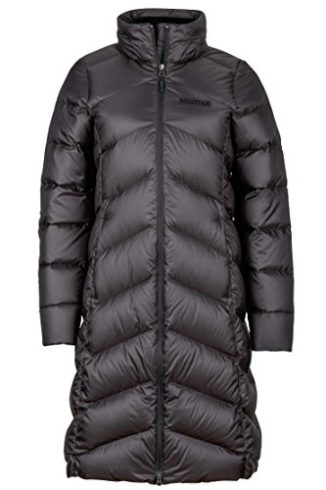
The Marmot Company has a cool origin story; founded by a couple of college explorers as a club with an interesting membership requirement - to join The Marmot Club you had to climb a glaciated mountain top with one of the current members. This tested your bravery, endurance, and how cool you were… because they got to know you well while climbing an icy peak together.
The founders began Marmot in Alaska, while they were on a school Glaciology project in the Juneau Icefield. They made prototypes of down-filled clothing and wilderness gear and eventually did business out of a historic building in Grand Junction, Colorado.
The Marmot Club was also responsible for its growth and success. They climbed with filmmaker Mike Hoover in Peru, who recommended them to The Eiger Sanction with Clint Eastwood when the movie called for over 100 puffy jackets.
They also crossed paths in a Marmot Club fashion with one of the biggest names in outdoor warmth to this day, a man named Joe Tanner, who invented GORE-TEXⓇ. Marmot loves the new fabrication and sewed some prototypes. They spent an entire week in a commercial grade meat freezer comparing the warmth of sleeping bags made with and without the GORE-TEXⓇ nd testing the bags under fire sprinklers. They became one of the first customers of the Gore company and are the most proficient company at manufacturing GORE-TEXⓇ products.
Their company remains dedicated to field-tested, high-quality products. They place a high value on creating fair working conditions and supporting social initiatives, producing the best products for mountaineering professionals and enthusiasts, and producing environmentally friendly products while fostering global ecological awareness.
Their commitment to the environment means that the Montreaux, and all their products, are manufactured using reduced chemical applications, environmentally sustainable techniques, and recycled organic, environmentally friendly materials.
Their down products do not use live plucked plumage or down from Foie Gras ducks. They require annual recertification from their suppliers for a cruelty-free process. Not only do they engage in fair trade social policies, but they also require it of any vendor that wants to do business with them.
The Marmot Montreaux is a full-length puffy coat. Treated with Down Defender for a moisture resistant coat with a 700-fill power down to ensure warmth in wet conditions. The Down Defender treatment on the filling means that even if your down gets wet, it won’t clump or lose its warmth. Even the hood is cruelty-free because it uses faux fur. The hood also zips off for warmer days.
The lining is 100% polyester with a shell that’s 71% acrylic and 15% modacrylic. It has micro-fleece-lined hand warmer pockets, micro-fleece internal cuffs, an interior zippered pocket for accessories, an interior drop pocket for deeper storage space, and a plush, fleece lined torso.
Unlike some jackets this is machine washable - please read the care label before washing.
Check Price on Amazon ➞Buyer’s guide
Here we’ll go into more detail to help you pick the jacket or coat that best suits the activities and conditions in which you’ll use it.
What is an extreme cold weather coat?
They design extreme cold weather coats to keep you warm in even the coldest of environments. By, using special materials and layers they ensure that you don’t suffer from the elements but crucially you still keep the full range of movements, it’s no good being warm if you’re so bundled up you can’t ski or move your arms!
A cold weather coat should be able to withstand both the rain and snow. It should contain thick insulation and an outer shell that keeps you and the insulation dry.
Why do I need a cold weather coat?
Many people make the mistake of thinking their own winter coat will be enough to get them through winter everywhere. The trouble is that normal winter coats don’t have enough resilience against the elements. What happens when you try to wear a regular coat in subzero temperatures?
Hypothermia. This occurs when your body loses heat faster than it’s able to produce it. As your temperature gets colder and colder, your internal organs slow down and will eventually shut down. If immediate medical attention isn’t available death is almost inevitable. It can occur in a matter of minutes in sub-zero wind chills and harsh conditions. Many explorers have succumbed to hypothermia resulting in deaths and limb amputations caused by extreme exposure.
Another serious risk is frostbite. Even if you aren’t in quite those extreme temperatures, exposure to wind chills can lead to frostbite. Even the Centers for Disease Control and Prevention (CDC) recommend that you stay safe in extreme weather by wearing “a tightly woven, preferably wind resistant coat” while outside.
Types of Jackets
There are many styles of jackets and coats available, the one you pick will depend, as we said above, on your sport or activity, the temperatures you’ll be wearing it and also to a certain extent your preference over the styles and designs offered.
Technical jackets frequently come in bright neon colors, which makes spotting them against a white, snowy background, much easier. With flexible, durable fabrics providing ease of movement, these jackets are a firm favorite of skiers and snowboarders and can handle extreme temperatures. Features:
- Down filler which provides a high level of insulation.
- Drawstrings at the waist for custom fits and wrist to prevent snow from getting beneath gloves.
- Interior pockets for water bottles and electronics.
- Hoods compatible with helmets.
- Zippers and straps compatible with harnesses.
Casual jackets focus less on weight and packing and more on warmth and comfort. These will be more stylish but less heavily rated for extreme conditions. Because they’re created with inbuilt insulation and a heavier weight of the fabric, they aren’t suitable for active wear. They’re typically worn in the city or low activity pursuits such casual ice skating for example.
Features:
- Fur hoods.
- Longer and roomier fit for daily wear.
- Interior pockets with headphone access and other features that make it easier to operate smartphones and gear without exposing hands to the elements.
It’s important to know what features you’re looking for when you make a major purchasing decision, and this is no exception. So, let’s look at some different features that set extreme cold coats apart from the rest of the coat family.
Layering
The best strategy for braving colder weather is layering. With fluctuating temperatures, layering allows you to remove layers as necessary and maintain comfortable body heat. The other advantage of layering is that it prevents the loss of flexibility that occurs when you wear giant, bulky coats that try to do all the work themselves. That being said, be strategic. Many people think more is better, but once you add too many layers, you still end up losing your range of motion. Choose layers based on what they can do for you.
Layering also allows for different material types. This is important because different materials can offer different protection. For more on the different materials used, check out the section on Fabrics and Materials below.
- Base layer – should be able to wick away sweat to control the moisture level on the skin. For sub-zero conditions, this layer should also have a thermal element.
- Mid layer – should be a thermal element, the insulation, often down, keeps you warm.
- Shell or outer layer – provides protection against the elements and should be both waterproof (or water resistant in extreme conditions) and windproof.
Fabrics and Materials
They often label materials light, medium, and heavyweight, this doesn‘t refer to the sizing but the density of the fabric. Lighter materials are more breathable while heavier ones will be better in cold temperatures. There are many fabrics from which to choose such as:
- Wool – this natural material offers warmth along with great moisture wicking properties, it makes an ideal base layer. Note- lower grade wools can be scratchy against the skin so ensure you wash and soften your garments before you wear them.
- Merino wool – is one of the warmest and softest grades of wool and is much favored by a wide range of sportsmen and women. Note – Merino wool needs careful care but if you handle it well, it will give you excellent warmth and years of wear.
- Synthetic materials – typically blend of polyester, nylon, propylene, or rayon are the most common fabrics for the outer shell of jackets and extreme weather coats. Ensure they have applied the correct treatments so they are both water and windproof. Note – they won’t offer enough protection against the coldest temperatures, so make certain to have they build sufficient insulated layers to withstand the extreme cold.
- GORE-TEXⓇ – provides the thermal shell and internal layering of many jackets across a wide range of sports and extreme activities. Wear it alone for lightweight protection in warmer weather or layer with other fabrics for harsher climates. We love this material. Look for it and grab it.
Avoid cotton. As comfortable and common as cotton is, it does nothing for the weather or moisture. If you sweat under your layers, the damp shirt will cause you to lose heat even faster. This will be dangerous in cold weathers, where your body can’t produce heat quickly enough to warm you.
Anatomy of a Jacket
There are a lot of products on the market claiming to be winter coats, but for extreme temperatures, you do not want to cut corners. Purchase the highest quality jacket you can afford which provides the warmth and protection you need for your pursuits. It is often a false economy to cut costs with these types of purchases, money well spent now should ensure you have a jacket that will last many years.
There is leeway when you are just looking for a warm jacket for a freezing winter, like parts of Canada, Alaska, and the northernmost states, but not if you are planning to go on an expedition in the Arctic North or remain in sub-zero temperatures for hours on end. All the best quality jackets share certain features that make them ideal for cold weather wear. Here are some of the most important features:
A thin, waterproof outer shell. It serves as a buffer for your jacket to keep both you and your insulation dry in the rain, snow, sleet, or even hail. GORE-TEXⓇ is an excellent material but others include eVentⓇ and H2NOⓇ. If this is your primary layer, you will need to remember the things we shared in our section on Layering, see above.
If you’re using a shell that’s not insulated, look for multiple layers in your membrane and a durable water repellent coated material. Consider the climate before you decide if you need a fully waterproof jacket, GORE-TEXⓇ is a great option for fully waterproof layers.
Insulation provides warmth in your jacket by trapping your body heat and keeping it close to you without allowing heat to escape. There are three different types:
- Down feather is seen as the best insulator in jackets and coats. The industry sets the standard for down insulation meaning whatever brand you choose the filling standard will remain the same. The beauty of down is it’s highly compressible enabling a high level of insulation in a small amount of space cutting down on the bulkiness but not the warmth. If you take care of your down coat it could last a lifetime, it highly durable and lightweight. On the flip-side, if it gets wet it can clump and lose its ability to provide adequate insulation. To prevent this, high-end manufacturers will coat their down and outer shell in a chemical to stop the feathers from clumping together.
The fill power in a down jacket shows the quality. It is essentially a way to measure the jacket’s volume. The thing to remember is that the higher the number, the better the quality. Higher numbers are warmer by weight than lower power fills. If you remove the down from your jacket and stuff it into a cup, then a cup full of 850 fill down will be warmer than a cup full of 650 down. The fill weight is the other part of this equation. This is the overall mass of insulation. Therefore, a jacket with a pound of 650 fill power is still warmer than a jacket with only an eighth of an ounce of 850 fill down.
- Synthetic insulation is made with plasticized fibers that will mimic down. The advantage of synthetic insulation is that it won’t clump or cause issues when it gets wet. One disadvantage is that there is no industry standard for materials or insulation. This means that you can’t easily compare the warmth capacity from brand to brand and get a true sense of which will do a better job keeping you warm. Another drawback is that over time, especially with heavy use and lots of packing down, it will lose its ability to keep you warm. None of the synthetic jackets that we tested could insulate as well as even the lower quality down jackets.
- Fleece is meant to replicate the warmth of wool without being as heavy or scratchy. It is a fabric that comprises fuzzy, soft, thick layers woven together. This material is as durable as down is and as inexpensive and ready for water as a synthetic. The biggest drawback to fleece is that it is nowhere near as warm as other options. This will not keep you warm by itself in cold situations. It makes a great inner lining for pockets, but not as a jacket’s main source of insulation.
Hoods
It is essential that your jacket has a hood, this isn’t an optional feature. Your hood not only keeps your head warm, but it also prevents heat loss from your scalp, which is one of the fastest ways for heat to leave your body. If you like the flexibility of choosing whether to have a hood then look for those coats with a removable hood. These are nice options for style and can reduce bulk in warmer climates. Some hoods come with wire fitting, these will hold up best against wind chills and icy blasts. Some of them have built-in face masks to keep the wind from reaching your exposed face.
For extreme sports, look for hoods that are helmet compatible, you’ll stay warm and be safe. The best hoods are highly adjustable with removable fur and an integrated face mask.
Adding a scarf or gaiter to your hood will keep your neck and face warm and protected from the elements. If you’re in extremely harsh conditions, then goggles and a face mask will offer maximum protection against the impact of wind chill, rain, snow and ice which can feel like knives on exposed skin.
Closures
A lot of jackets will mention closure systems on their cuffs and zippers. These pertain to warmth and water resistance. Rib knitted cuffs are great, but they only allow for gauntlet styled over the top gloves unless you’re willing to stretch out the fabric. Loose cuffs will let in drafts but are more stylish than fitted. Bring your gloves with you when you test jackets to make sure they will fit.
Zippers
Zippers are rarely waterproof or weatherproof so if you need a jacket for extreme weather make sure the zippers can handle it. Most jackets won’t have waterproof zippers but will have a storm flap to prevent the elements from reaching the zipper. These are great as long as they aren’t difficult to snap off while wearing gloves. Two-way zippers allow you to open your jacket from the top or bottom so you can keep in as much heat as possible. These also allow you to unzip a winter coat when you sit down so you’re not cramped and bunched up like you are in a sleeping bag.
Temperature Rating
Each brand of a winter coat has its own temperature rating system. Brands such as Canada Goose use a system denoting the temperature ranges that have been field tested for each jacket. Make sure that the brand you choose is specific about what temperatures their jackets can handle. Warm is a relative term, and so is the phrase extreme cold.
Style
No one wants to look like a walking balloon but don’t worry there are a lot of stylish options available. Note – try not to follow the fashion so hard that you lose sight of the warmth, that and the protection a jacket gives you, are the two most important factors when deciding on an extreme cold coat.
Fit
It’s important to make sure your jacket fits your needs and your body. When you’re wearing a cold weather coat, there should not be any gaps or open spaces. If you have openings, the cold air will go right through them and you may as well not be wearing any insulation.
You also need to leave the jacket loose enough to fit a couple of layers underneath. If you’re braving the extreme cold, you’ll be wearing thermal underwear and shirts, regular shirts, a sweater, and the jacket.
Pay attention to the sleeves to ensure they close up to prevent wind from sneaking up your arms and into the jacket. The hem of your jacket should have a drawstring, cinching in the bottom of your jacket not only improves the fit, but it’ll also ensure no wind will enter through the bottom of the coat.
A fleece liner and a high neckline can also help protect you from the elements.
Warranties
A lot of jackets in this sector will offer a lifetime warranty which should protect both the craftsmanship and the materials of the coat or jacket. These will protect you from knockoffs and fakes. If you buy a jacket directly from the manufacturer, North Face, Columbia, Canada Goose, and several others will offer lifetime warranties for both craftsmanship and materials.
Be sure to investigate the warranties before purchasing. If they don’t offer a warranty, they are very likely a fake product, an unauthorized reseller, or a lower quality winter coat that will not keep you safe from the elements.